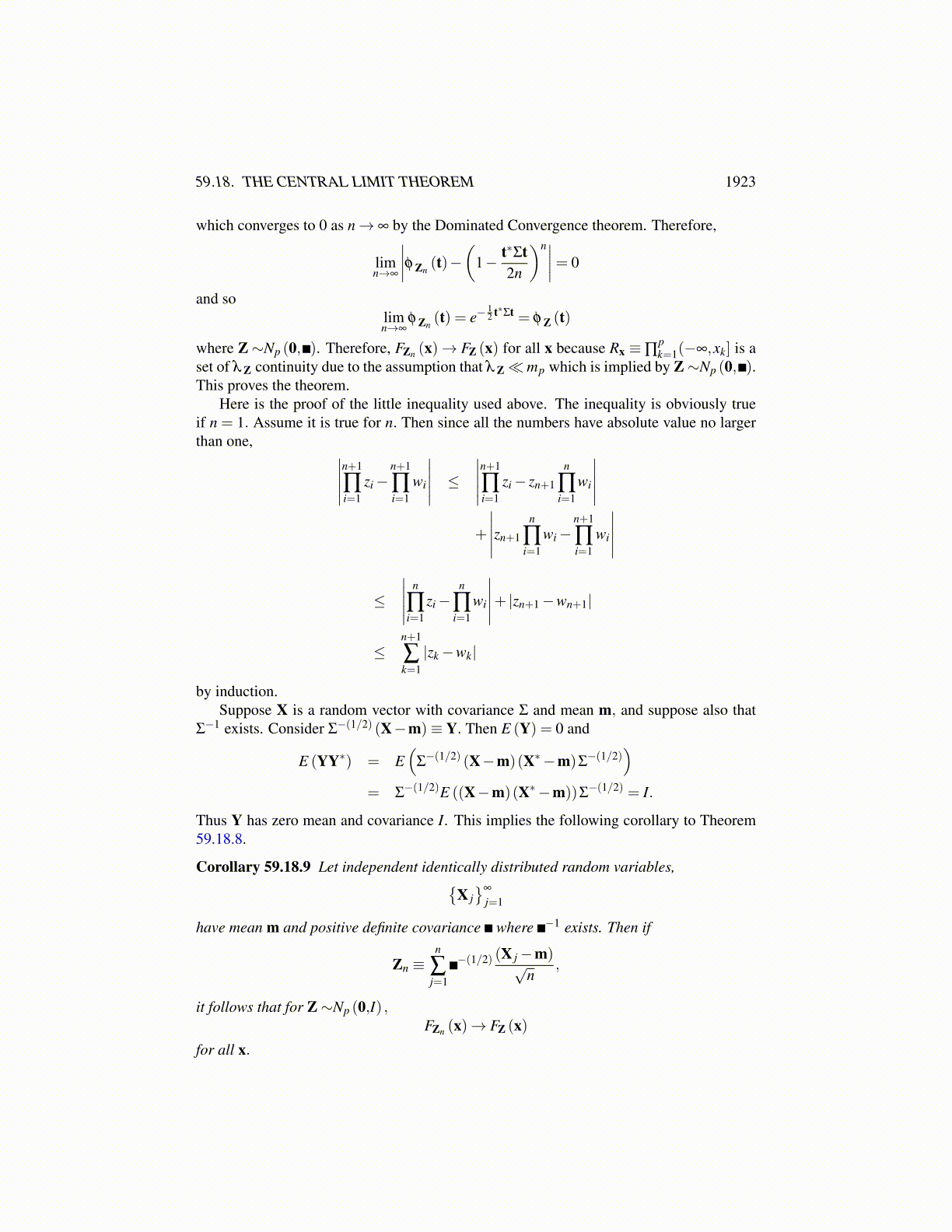
59.18. THE CENTRAL LIMIT THEOREM 1923
Now let λ X (∂A) = 0 for A a Borel set.
λ X (int(A)) ≤ lim infn→∞
λ Xn (int(A))≤ lim infn→∞
λ Xn (A)≤
lim supn→∞
λ Xn (A) ≤ lim supn→∞
λ Xn
(A)≤ λ X
(A).
But λ X (int(A)) = λ X(A)
by assumption and so limn→∞ λ Xn (A) = λ X (A) as claimed. Thisproves the theorem.
As an application of this theorem the following is a version of the central limit theoremin the situation in which the limit distribution is multivariate normal. It concerns a sequenceof random vectors, {Xk}∞
k=1, which are identically distributed, have finite mean m, andsatisfy
E(|Xk|2
)< ∞. (59.18.41)
Definition 59.18.7 For X a random vector with values in Rp, let
FX (x)≡ P({
X j ≤ x j for each j = 1,2, ..., p})
.
Theorem 59.18.8 Let {Xk}∞
k=1 be random vectors satisfying 59.18.41, which are inde-pendent and identically distributed with mean m and positive definite covariance ≡E((X−m)(X−m)∗
). Let
Zn ≡n
∑j=1
X j−m√n
. (59.18.42)
Then for Z∼Np (0, ) ,limn→∞
FZn (x) = FZ (x) (59.18.43)
for all x.
Proof: The characteristic function of Zn is given by
φ Zn(t) = E
(eit·∑n
j=1X j−m√
n
)=
n
∏j=1
E
(e
it·(
X j−m√
n
)).
By Taylor’s theorem applied to real and imaginary parts of eix, it follows
eix = 1+ ix− f (x)x2
2
where | f (x)|< 2 andlimx→0
f (x) = 1.
Denoting X j as X, this implies
eit·(
X−m√n
)= 1+ it·X−m√
n− f
(t·(
X−m√n
))(t·(X−m))2
2n